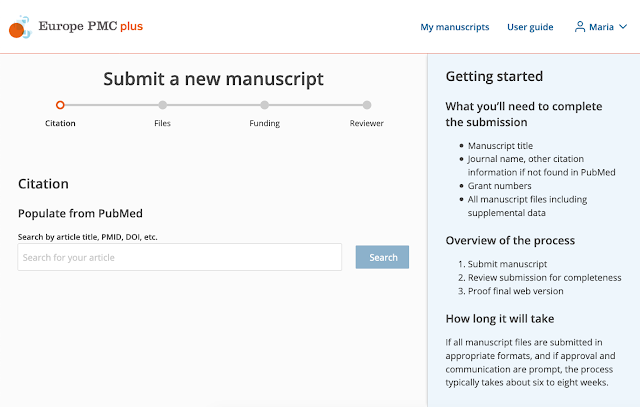
We are delighted to announce the launch of the new Europe PMC Plus – the manuscript submission system for authors supported by Europe PMC funders. Europe PMC is the repository of choice for 29 international life sciences funders, who recommend or require that publications arising from the research they fund, are made openly available via Europe PMC.




